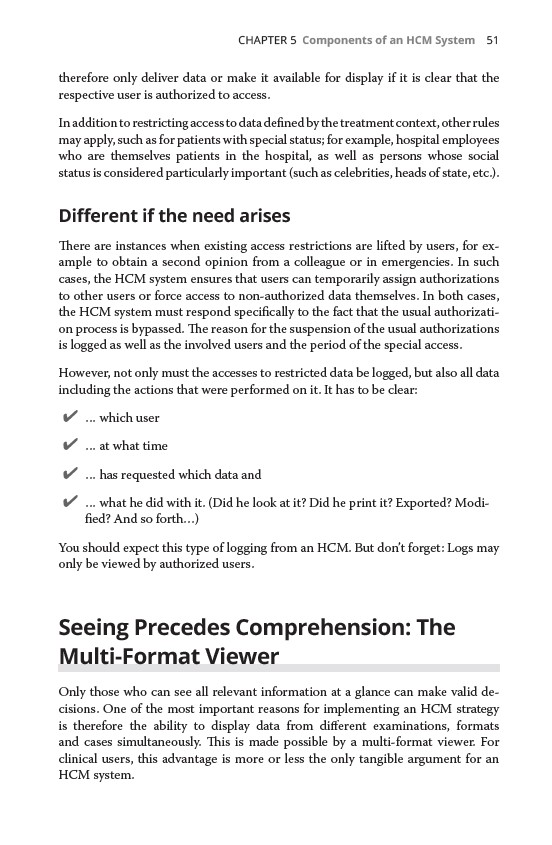
CHAPTER 5 Components of an HCM System 51
therefore only deliver data or make it available for display if it is clear that the
respective user is authorized to access.
In addition to restricting access to data defined by the treatment context, other rules
may apply, such as for patients with special status; for example, hospital employees
who are themselves patients in the hospital, as well as persons whose social
status is considered particularly important (such as celebrities, heads of state, etc.).
Different if the need arises
There are instances when existing access restrictions are lifted by users, for example
to obtain a second opinion from a colleague or in emergencies. In such
cases,
the HCM system ensures that users can temporarily assign authorizations
to other users or force access to non-authorized data themselves. In both cases,
the HCM system must respond specifically to the fact that the usual authorization
process is bypassed. The reason for the suspension of the usual authorizations
is logged as well as the involved users and the period of the special access.
However, not only must the accesses to restricted data be logged, but also all data
including the actions that were performed on it. It has to be clear:
✔✔… which user
✔✔… at what time
✔✔… has requested which data and
✔✔… what he did with it. (Did he look at it? Did he print it? Exported? Modified?
And so forth…)
You should expect this type of logging from an HCM. But don’t forget: Logs may
only be viewed by authorized users.
Seeing Precedes Comprehension: The
Multi-Format Viewer
Only those who can see all relevant information at a glance can make valid decisions.
One of the most important reasons for implementing an HCM strategy
is therefore the ability to display data from different examinations, formats
and cases simultaneously. This is made possible by a multi-format viewer. For
clinical
users, this advantage is more or less the only tangible argument for an
HCM system.